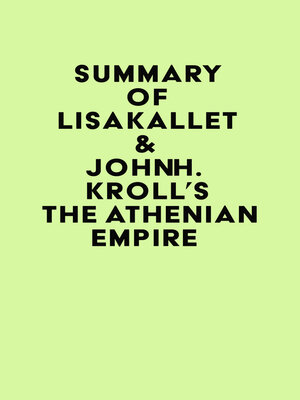
Sign up to save your library
With an OverDrive account, you can save your favorite libraries for at-a-glance information about availability. Find out more about OverDrive accounts.
Find this title in Libby, the library reading app by OverDrive.



Search for a digital library with this title
Title found at these libraries:
| Loading... |
Please note: This is a companion version & not the original book. Book Preview:
#1 The silver ore deposits in southeast Attica, which were abundant and of exceptionally high purity, were the main source of silver for the central and eastern Mediterranean world from the late sixth century through most of the fourth century BC.
#2 The city of Athens began minting silver coins around the middle of the sixth century. The coins were simple in design, having a pictorial type on one side and a crossed, square punch mark on the other. But around the teens of the sixth century, the city began to mint coins with national types on each face: the head of Athena wearing a helmet on the obverse, and her accompanying owl and a sprig of her olive tree on the reverse.
#3 The Athenian coinage changed to reflect the new political situation, and they were now minted with an image of Athena on one side and a three-letter legend on the other. They were also struck in large quantities, which allowed the Athenians to fund their fleet in preparation for the Persian invasion.
#4 The owls of Athens were struck on a massive and ever-expanding scale that surpassed the archaic coinage that preceded them. The minting estimate was more than 9,000 talents of silver, which was the output of 700 tetradrachm obverse dies.






